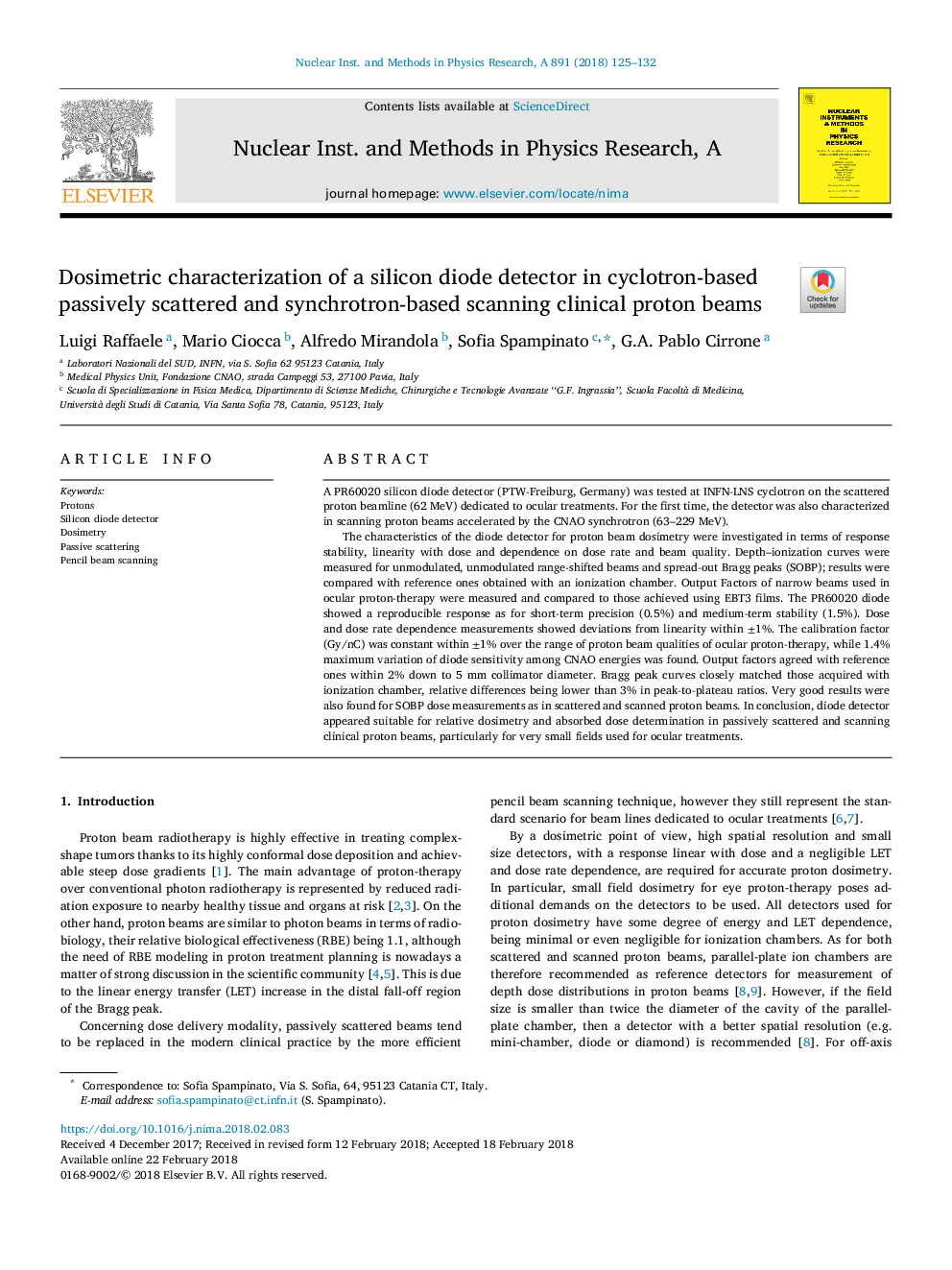| Article ID | Journal | Published Year | Pages | File Type |
|---|---|---|---|---|
| 8166421 | Nuclear Instruments and Methods in Physics Research Section A: Accelerators, Spectrometers, Detectors and Associated Equipment | 2018 | 8 Pages |
Abstract
The characteristics of the diode detector for proton beam dosimetry were investigated in terms of response stability, linearity with dose and dependence on dose rate and beam quality. Depth-ionization curves were measured for unmodulated, unmodulated range-shifted beams and spread-out Bragg peaks (SOBP); results were compared with reference ones obtained with an ionization chamber. Output Factors of narrow beams used in ocular proton-therapy were measured and compared to those achieved using EBT3 films. The PR60020 diode showed a reproducible response as for short-term precision (0.5%) and medium-term stability (1.5%). Dose and dose rate dependence measurements showed deviations from linearity within ±1%. The calibration factor (Gy/nC) was constant within ±1% over the range of proton beam qualities of ocular proton-therapy, while 1.4% maximum variation of diode sensitivity among CNAO energies was found. Output factors agreed with reference ones within 2% down to 5 mm collimator diameter. Bragg peak curves closely matched those acquired with ionization chamber, relative differences being lower than 3% in peak-to-plateau ratios. Very good results were also found for SOBP dose measurements as in scattered and scanned proton beams. In conclusion, diode detector appeared suitable for relative dosimetry and absorbed dose determination in passively scattered and scanning clinical proton beams, particularly for very small fields used for ocular treatments.
Related Topics
Physical Sciences and Engineering
Physics and Astronomy
Instrumentation
Authors
Luigi Raffaele, Mario Ciocca, Alfredo Mirandola, Sofia Spampinato, G.A. Pablo Cirrone,
